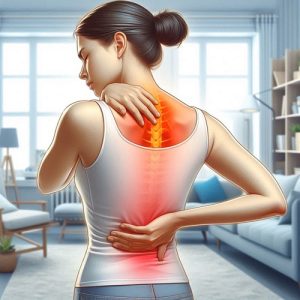Treatment of Blisters in Athletes: The Fastest Way to Overcome Blisters and Stay in the Game
Blisters are a common problem for athletes, often leading to discomfort, decreased performance, and even time away from their sport. A blister can seem like a minor injury, but for athletes, quick and effective treatment is essential to minimize downtime and prevent further complications. This comprehensive guide focuses on blister treatment, quick blister relief, and blister prevention methods that athletes can use to maintain peak performance. Additionally, it will discuss sports injury recovery, athlete foot care, and provide foot blister remedies that help in fast healing.
Introduction: The Importance of Blister Management in Athletes
Blisters might seem like a small issue, but for athletes, they can be a major setback. The constant friction and repetitive motion involved in sports create the perfect environment for blister formation, especially on the feet and hands. Without proper care, blisters can worsen, leading to infection, painful downtime, and a decrease in athletic performance.
The goal of this article is to provide detailed, actionable steps for fast healing blisters, including tools and remedies for quick relief and long-term prevention. Whether you’re a professional athlete or someone who enjoys regular physical activity, understanding how to manage and prevent blisters is essential.
Why Are Blisters Common in Athletes?
Blisters form due to friction, heat, and moisture, which is why they are so prevalent among athletes. When skin repeatedly rubs against shoes, equipment, or surfaces, it separates layers of skin, creating a fluid-filled bubble. Foot blisters are especially common in sports like running, soccer, basketball, and tennis, where the feet are under constant pressure. Hand blisters can also occur in activities that involve gripping equipment like weights, tennis racquets, or gymnastics bars.
Blister Treatment for Athletes
Understanding Blister Formation and Severity
Blisters usually start with redness and irritation, followed by the formation of a fluid-filled pocket under the skin. This fluid acts as a protective cushion for the underlying tissue, but it also causes pain, limiting mobility. Friction blisters, the most common type in athletes, can be aggravated by poorly fitting footwear, prolonged activity, and moisture buildup.
In some cases, blisters can develop into blood blisters if a blood vessel under the skin is damaged, causing the blister to fill with blood. These require extra care to prevent infection and should not be punctured without caution.
Tools for Effective Blister Treatment
To properly treat a blister, athletes need to use the right tools in the correct sequence. Here’s a step-by-step guide:
- Needles (Sterile Puncture Tool): If the blister is large and painful, draining it can provide quick relief. Use a sterile needle to puncture the blister at its edge, allowing fluid to drain without tearing the skin. This helps prevent further damage and aids in healing.
- Gauze Pads (2×2 or 4×4): After draining, clean the area and apply a sterile gauze pad to absorb any remaining fluid. Gauze is an essential part of blister care as it helps keep the area clean and dry, reducing the risk of infection.
- Antiseptic Cream or Ointment: Before dressing the blister, apply an antiseptic cream or ointment to the area to prevent infection. Ingredients like Neosporin or iodine can help in maintaining a germ-free environment for the wound.
- Non-Adhesive Pads or Wool: For cushioning, use non-adhesive pads or lamb’s wool. These provide protection from further friction and allow the blister to heal faster by reducing pressure on the affected area.
- Tape or Moleskin: Once the padding is in place, secure it with sports tape or moleskin. Moleskin, a soft adhesive material, is especially useful because it reduces friction while protecting the blister.
- Skin Aid Spray Plaster: For an added layer of protection, athletes can use spray plasters. These sprays create a waterproof, breathable barrier over the skin, providing protection against dirt and bacteria.
- Foot and Hand Creams: Moisturizing the skin can prevent excessive dryness, which can cause friction blisters. Use foot and hand creams that contain ingredients like shea butter or glycerin to keep the skin soft and supple.
Step-by-Step Process for Treating Blisters
Let’s break down the blister treatment process step-by-step for clarity:
- Assess the Blister: Examine the size and condition. If the blister is small and intact, it’s best to leave it alone to heal on its own. For larger or more painful blisters, follow the next steps.
- Sterilize the Area: Clean the skin around the blister with soap and water or an antiseptic wipe.
- Drain the Blister (if necessary): If the blister is too painful or large, use a sterile needle to puncture it at the edge. Allow the fluid to drain gently without removing the outer skin layer.
- Apply Antiseptic: Once drained, apply an antiseptic ointment to the area to prevent infection.
- Cover the Blister: Use a non-adhesive dressing like a gauze pad to cover the blister. If extra cushioning is needed, use padding such as lamb’s wool.
- Secure the Dressing: Apply moleskin or athletic tape over the dressing to hold it in place.
- Monitor Healing: Check the blister regularly to ensure it’s healing properly. Replace the dressing if it becomes wet or dirty.
- External Vitamin Application: Use ointments enriched with vitamins A, E, and D.
Blister Management
Blister treatment is a critical part of sports medicine, focusing on preventing infection and minimizing downtime. Medical professionals, coaches, and sports therapists emphasize the importance of early treatment for blisters to avoid more severe complications, such as cellulitis or other skin infections.
Expert Opinions and Case Studies
According to research published in sports medicine journals, friction blisters are the most common skin-related injury in athletes, particularly in sports like running, soccer, and tennis. Studies show that properly managing blisters can reduce recovery time and help athletes return to play faster. In one case study, a group of marathon runners who followed a strict blister prevention regimen using specialized socks, moisture-wicking foot powder, and blister pads experienced fewer blisters and less foot pain during long-distance events compared to those who used regular socks alone.
If an untreated blister is left to worsen, several complications can occur:
Increased Pressure on Surrounding Areas: As you mentioned, compensating for pain by shifting weight or pressure to the opposite side can lead to imbalances, causing stress on other parts of the body. This can result in injuries, such as muscle strains, ligament sprains, or joint problems, in previously uninvolved areas.
Infection: Blisters, especially when they burst, expose raw skin, making it vulnerable to bacterial infections. This could lead to more serious skin infections, such as cellulitis, and may even spread to deeper tissues.
Delayed Healing and Scarring: Without proper care, the blister may take longer to heal, potentially leaving behind scar tissue that could affect the skin’s flexibility and function in the long term.
Deeper Tissue Damage: If neglected, a blister can progress from a superficial issue to one affecting deeper layers, such as muscle and bone, similar to how pressure ulcers (bedsores) can develop if untreated.
Properly treating blisters is crucial to prevent these complications and ensure faster recovery.
Sports medicine experts also advocate for using specialized blister prevention tools, such as silicone heel cups, anti-friction balms, and moisture-wicking socks. These preventive measures significantly reduce the risk of blisters, especially during intense physical activity.
Experience of the Author
As a Physiotherapist, athletic therapist, and sports pathologist with years of experience working with both professional and amateur athletes, I have witnessed firsthand the impact that improper blister treatment can have on performance. I have collaborated with leading wound care specialists and other healthcare professionals to develop a clear and actionable approach to quick blister relief and foot blister remedies.
In addition to treating athletes, I have conducted workshops on blister prevention and recovery techniques for sports teams, ensuring they understand the best methods to maintain athletic performance even when dealing with common injuries like blisters.
Information and Solutions
Blister treatment, especially for athletes, needs to be both fast and effective to prevent interruptions in training or competition. The information provided here is based on trusted medical advice, research studies, and hands-on experience with athletes from various sports disciplines.
All recommended treatments, from using sterile needles to tape and gauze application, follow best practices for preventing infections and promoting healing. It’s crucial for athletes to treat blisters promptly and follow these steps carefully to avoid complications that could prolong their recovery time.
Keeping Athletes on Their Feet with Effective Blister Treatment
Athletes should also focus on blister prevention by investing in proper footwear, moisture-wicking socks, and anti-friction creams. Regular monitoring of areas prone to blisters, such as feet and hands, can catch early signs of friction before a blister forms.
For athletes aiming to recover quickly and stay in the game, proper blister treatment is key. Remember, addressing the problem early not only ensures a faster recovery but also helps prevent more severe injuries in the future.


